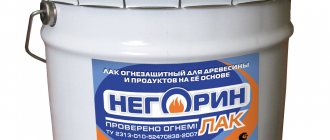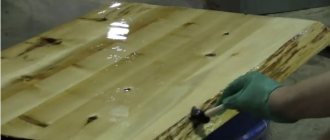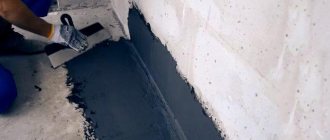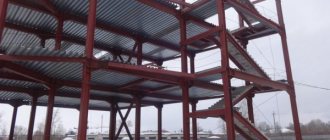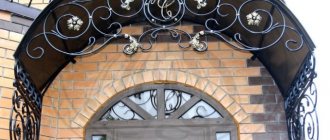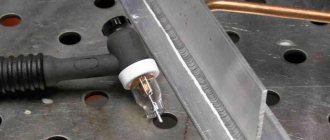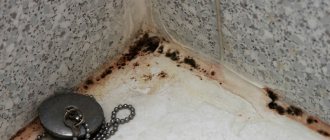At a price of 65 rubles per sq. m.
With a positive conclusion from the Ministry of Emergency Situations
from a company with 14 years of experience
Ask a Question
Wood is one of the most popular materials in construction and industry. With all the many advantages of wood, it has a serious drawback - wood burns and maintains combustion. To avoid serious losses, we offer fire retardant treatment for wooden structures.
You will receive fire protection treatment at a high level on a turnkey basis. You set a task - we do it!
Fire protection treatment of wooden structures involves treating the material with fire retardants. (flame retardants are a large group of products that includes paints, varnishes, and impregnations).
Fire is not the only destroyer of wood; there is also dampness and biological factors: fungus, mold, etc.
Our fire-bioprotection of wood involves treating the structure not only with fire retardants, but also with fungicidal compounds.
TechStroyGarant specialists carry out comprehensive fire retardant treatment of wooden structures in Moscow and the Moscow region
With fireproofing work, we save people’s lives and guarantee that the protective material is capable of holding back direct flames for 120 minutes
We have already protected more than 70 objects and guarantee increased durability of load-bearing structures under direct exposure to fire and high temperatures
Call 8 (495) 150-5-987
Cost of wood fire protection
The price of fire retardant wood treatment is determined by the following factors:
- cost of material (impregnation, coating paste, coatings);
- delivery price – depends on the distance of the object;
- complexity and energy intensity of application;
- scope of work.
Approximate cost of fire retardant treatment of wooden structures
| Work performed | Price |
| Application of fire retardant up to fire resistance limit R30 | from 650 rub/m2 |
| Application of fire retardant up to fire resistance limit R60 | from 900 rub/m2 |
| Application of fire retardant up to fire resistance limit R90 | from 1200 rub/m2 |
| Application of fire retardant up to fire resistance limit R120 | from 1600 rub/m2 |
| Impregnation with a fire retardant composition up to efficiency group 1 (obtaining wood that is difficult to burn) | from 70 rub/m2 |
| Impregnation with a fire retardant composition up to efficiency group 2 (obtaining fire-resistant wood) | from 100 rub/m2 |
| Application of fire retardant paint up to R30 | from 200 rub/m2 |
| Application of fire retardant paint up to R60 | from 250 rub/m2 |
| Application of fire retardant paint up to R90 | from 300 rub/m2 |
| Application of fire retardant paint up to R120 | from 400 rub/m2 |
| Coating with fire retardant varnish up to group 1 | from 350 rub/m2 |
| Coating with fire retardant varnish up to group 2 | from 500 rub/m2 |
The final cost is reflected in the contract.
Important!
When assessing the cost of a material, we proceed not only from the actual price indicated in the price list, but also from consumption. If consumption is high, purchasing the cheapest product may not be economically justified.
Another feature of cheap fire retardants is that they take longer to dry, which delays the installation process.
The durability of fire retardants varies. Some function for years; wood fire protection with other compounds must be treated annually. To determine which product is more profitable, this factor should also be taken into account. What we inform the client about.
Call 8 (495) 150-5-987 and we will try to choose the option that is most profitable for you.
Examples of completed fire protection work
Fire protection of wooden structures in the Serebryany Bor complex in the Klinsky district
Basic SNiP, GOST for fire protection of wooden structures Fire protection of buildings Treatment of wooden structures with fire retardant composition Fire retardant impregnation of wooden structures
TekhStroyGarant carried out fire protection of wooden structures in the Sports and Recreation Complex (PHC) and Congress. A large volume of laminated wood structures were treated with fire retardant compounds from the manufacturer NORT, which were coated with fire retardant varnish.
Read more >>
Fire protection of wooden structures in the Orlovsky park hotel in the Leninsky district
Work on fire-retardant painting of wooden structures in the Sukachev Estate building on the territory of the Orlovsky park hotel has been completed. Watch videos and photos of the works.
- Careful painting of wooden structures with a fire retardant compound required careful covering of nearby structures.
Read more >>
Fire protection of wooden structures in the SPARTAK Tennis Court complex in Sokolniki
Work on fire protection of laminated wood structures in the building of 10 courts on the territory of the Spartak tennis complex has been completed.
- Fire retardant coating Pirilax-K45 was used in combination with fire retardant varnish Krasula.
Difficulties that we overcame with a bang!
- The surface of wood-laminated structures required additional preparation before applying the fire retardant composition.
- Increased humidity extended the interlayer drying time
- Large area for packing and unpacking surrounding structures.
Read more >>
VIEW ALL PROPERTIES
Types of fire retardants
Varnishes (fire retardants, plasticizers, colors)
They form a transparent and glossy film, which, when heated, releases non-flammable gases that prevent fire.
Advantages of the material:
- Additionally protects the surface from biological factors and precipitation;
- Forms a vapor-impermeable film;
- Does not spoil the appearance of the wood, preserves its texture and color;
- It has no pungent odor and does not contain harmful components.
Enamels and paints
They are in demand when processing beams, rafter systems and other roofing elements. We use two types of paints: intumescent and non-intumescent. When heated, the coating of the first type increases in volume by no less than 10 times, which improves its technical qualities.
Advantages:
- Good adhesion - you can create a dense layer on uneven surfaces;
- The ability to process parts that interact with water or are located in places with high levels of moisture;
- Effective antiseptic protection;
- Decorative – the color of the material can be any.
Mastics and pastes
Typically used in attics. The degree of fire resistance depends on the number of layers applied.
Advantages
They are the most reliable means of fire protection among all paintwork materials, and at the same time they are characterized by low cost. However, mastics and pastes are used less than other methods of protection, because they significantly change the appearance of the wood. They are in demand mainly in technical rooms.
Impregnations
They are made from a mixture of fire retardants and antiseptics. They do not create a film, but are absorbed into the surface, forming a shell resistant to high temperatures. We use deep or surface treatment compounds; impregnation of wooden structures with a fire retardant compound is carried out using an airless method, in conditions not lower than +5 degrees.
Advantages:
- Resistance to biological factors (rotting);
- Highly reliable fire protection of wood structure (during deep processing);
- Preservation of surface appearance (wood texture and color).
Combined products
They form a coating that combines several types of fire protection (for example, varnish and impregnation). Each material is applied one by one.
Advantages:
- High reliability - combined coatings are much more resistant to fire than the same compositions used separately;
- Durability – maintain performance for up to 12 years;
- Compatibility of layers - we select materials in such a way that they perform their task as efficiently as possible;
- Economical.
fire protection from experts
Advantages of fire protection of wooden structures in
"TehStroyGarant" uses all methods of fire protection treatment of wooden structures. Our clients include large enterprises and residential complexes in Moscow and the Moscow region. We provide customers with turnkey work:
- preliminary consultations – by phone and on site;
- technical expertise;
- all necessary documentation - technical report, project, legal documents;
- installation of fire protection in any volume, any degree of complexity.
is a certified dealer of the best domestic and foreign manufacturers of fireproof materials.
Tasks and means of fire protection for wood
Fire protection for wood must perform three main functions:
- fire treatment of wood (fire protection);
- stopping the spread of flame;
- “passive” protection – localization of a fire at the very beginning.
During the acceptance process of a construction site, an employee of the Ministry of Emergency Situations takes samples of materials to ensure that the processing meets standard requirements.
Groups of chemicals for fire retardant treatment of wood:
- varnishes – create a transparent heat-resistant film on a wooden surface;
- paints are a mixture of fire retardants with pigments of different colors. The composition may include plasticizers, hardeners and other additives;
- coating pastes – composite materials. The composition is similar to paint, but the application layer is thicker;
- impregnation - a mixture of fire retardant and antiseptic. This group includes bio-fire protection for wood. These compounds do not form a film on the surface, but penetrate into the structure of the wood. There are deep and superficial penetrations;
- combined products – complex formulations. The components are applied separately in accordance with the manufacturer's instructions.
For your information
All products, regardless of type, are divided into weather-resistant and non-weather-resistant. The latter are used only in heated rooms, humidity within 70%.
In addition to chemical compounds, fire-prevention treatment can be performed with various fire-resistant coatings:
- non-flammable GVL;
- foil rolled thermal insulation materials;
- fire-resistant belts;
- frame structures, slabs, bricks, fire-resistant plaster.
These are additional funds. They are used where treatment with fire retardants is impossible for some reason.
IMPREGNATION
The principle of operation of fire retardants
The resistance of protective equipment to fire is ensured by fire retardants - salts diluted in liquid. During processing, the composition penetrates into the structure of the wood, the water evaporates, and the salts remain on the surface, securely “pressed” by the paint and varnish material.
The quality of fire protection depends on the type of salt. Inorganic flame retardants are cheap and less effective - salt melts under the influence of temperatures, and after melting, the fire resistance of the coating immediately decreases.
Organic flame retardants, when heated, produce salt gases that cool the surface. Plus, the pores of the wood are filled with protective elements that prevent the wood from burning further.
Regulatory documents and flammability categories of materials
Federal Law 123-FZ - July 22, 2008 regulates fire safety requirements. In accordance with these requirements, materials are divided according to the degree of flammability and related factors into groups, each of which corresponds to its own State Standard:
- non-fire hazardous (K0) – 30403 GOST;
- low-flammable (G1) – 30244;
- highly flammable (B1) – 30402;
- moderately hazardous, toxic when burning (T2) – 12.1.044;
- moderate smoke-generating (D2) – 12.1.044, etc.
The main standard for fire retardants for wood and wood materials is GOST R 53292-2009. Substances are classified based on the amount of wood pulp lost during testing. In accordance with GOST, fire protection of wood is divided into three groups:
- The first group of product effectiveness is the maximum level of fire resistance, at which the loss of material is 9% of weight. Wood does not ignite for up to 150 minutes. Such protection is used at particularly critical facilities and in places with large crowds of people;
- the second – weight loss of the material during testing is 25% (hard-to-flammable wood). Fire resistance 90 minutes;
- the third is minimal protection, provided mainly by fire-retardant paints.
We offer not only protective treatment of wooden, but also metal structures, as well as fire protection of air ducts.
Call 8 (495) 150-5-987
Fire retardant efficiency groups
The specifics of dividing fire retardant materials into fire resistance groups are specified in NPB 251-98. Efficiency is determined by testing treated wood under realistic conditions. The main indicator is the loss of mass of the structure after exposure to fire.
There are three fire resistance classes:
- The first group is the most reliable protection; wood loses 9% of its weight. Fire resistance – 150 minutes.
- The second group - the structure loses up to 25% of its weight. Fire resistance – 90 minutes.
- The third group is characterized by minimal protection. This treatment option is usually used for structures with a low fire resistance rating.
Each structure has its own fire resistance class (for example, public places are classified as fire resistance class 1).
Wood fire treatment technology
Before choosing the necessary product, we calculate its consumption per square meter of surface. On average it is 150-180 grams. We also pay attention to the service life of the protection and the fire safety class (it must be no lower than that specified in the design documentation).
When purchasing on their own, users should definitely request accompanying documentation - the sale and use of uncertified products is illegal, and the products themselves are unreliable, their use can lead to tragic consequences.
When contacting our company, you can be sure: we work only with certified materials from reputable manufacturers:
- Promat;
- Armacell;
- Buffalo;
- Defender;
- Terma.
For your information
Phoenix DB - water-based composition, white color. Consumption – 250 g per m2. Prevents the spread of flame. Can be used in combination with protective finishing materials. Fire retardant efficiency groups – G1, B2, D2, T2. Density is about 1.25 g per cm3.
Phoenix DP is a viscous white mass, the final coating is transparent. The composition is used when it is desirable to preserve the original wood texture. Density is about 1.25 g per cm3. At a consumption of 320 g per m2 - 1 efficiency group. Service life – up to 30 years. The use of Phoenix DP transfers wood materials from hazardous categories to safe ones (K0). Fire resistance depends on consumption:
- 500 g per m2 – 15 min;
- 1000 – 30;
- 1500 – 45.
To apply both paints, we use airless spraying units with a pressure of over 150 atmospheres or hand tools - roller and brush. Application of paints to wooden surfaces is possible at any stage - both before installation and after its completion.
Working conditions:
- temperature – +10-+35;
- humidity within 75%;
- humidity of a wooden structure – from 9 to 15% (GOST 4981 and R 53292);
- It is allowed to dilute the paint with water no colder than +10, in an amount of no more than 5%;
- Opened packaging should be used within 8 hours.
Defender-W paint is a fire-retardant, heat-expanding, water-based, one-component coating. Designed to improve the fireproof properties of wood, only for interior work, in non-aggressive conditions and without direct contact with water. At a consumption of 0.31 kg per m2 - 1 group of fire-retardant efficiency. The final coating is white; tinting in desaturated colors is possible at the factory.
We apply paint manually or mechanically (high pressure units, up to 250 bar). Storage and application temperature – from 5 to 35 degrees. If the manufacturer's recommendations are followed, the finished coating lasts 30 years.
Impregnating compounds can be applied in two ways. Firstly, as paint: with a brush, roller, spray equipment. The effectiveness of this method is lower than that of the second, since the product penetrates the pores close to the surface.
The second, more effective method is deep impregnation: pressure treatment in a hot-cold bath or autoclave. The principle is long-term soaking of wood in a fire retardant and subsequent drying. The second option for the deep impregnation method is vacuum application under a pressure of 8 atmospheres when heated to 60 degrees.
fire protection from experts
Additional fire safety measures
Fire protection of wooden houses does not only consist of treating the walls with impregnations. A lot depends on the correctness of the design of the house itself, since many errors arise during the design process.
When developing a project, you should definitely consult with a specialist about the correct wiring, location of the heating boiler and other important factors. A few important fire safety rules:
- Internal hidden electrical wiring in wooden walls is permissible only when using metal pipes as a protective box. Corrugated plastic tubes cannot be used for this, since the slightest violation of the insulation can cause a fire.
- The boiler room equipment must strictly comply with all safety requirements, especially for gas and solid fuel equipment. The standards stipulate in detail the design of the chimney, the dimensions of the boiler room, and other factors. If you do not take care to follow the rules, this can lead to tragic consequences - fires and explosions.
- It is recommended to install a fire protection system with smoke detectors and automatic response. So far, such high-tech solutions are more often chosen by organizations rather than private homeowners, but the cost is becoming more affordable. Such protection of a wooden house from fire will allow you to respond to a fire in a timely manner, evacuate people and begin extinguishing.
When deciding how to protect a wooden house from fire, a smart owner will think about insurance programs. The insurance organization will require compliance with basic fire safety standards, the contribution will be approximately half a percent of the market value. In exchange, the home owner will be able to receive compensation if fire destroys his property, and the insurance will also protect the building from natural disasters, robbery and other possible threats.
If you take care of protecting your home, without postponing this issue and without hoping “at random,” the house will last for many years, and it will not be afraid of any threats.
Leonid Bushuev
Author of publications on 1Drevo.ru with topics: Window in the attic | Cottages made of timber | Finishing of the façade from cylinders | Roundtech Machines | Rounded timber | Houses and baths made of cylinders | Floor standing gas boiler | Monolithic foundation | Log processing | Wood for a bath | Timber insulation | Repair of a frame house | House cladding, etc.
Was this publication useful to you?
Bookmark it on social networks!
Total score: 6Votes: 7
Finishing a house made of calibrated logs
Protecting a wooden house from rodents and insects
We recommend! — Encyclopedia Wooden Houses — NEW
You can find out detailed and expanded information on the topic of the article from the book “Wooden Houses,” which reflects all stages of building a house, from laying the foundation to installing the roof. Book price = 77 rubles.
You may also be interested in other BOOKS on building houses from wood with your own hands.
We recommend other posts on this topic:
Stages of insulating a log house from floor to ceiling
Internal covering for a log house - finishing and protection
Choosing the best insulation for a log house - review
If black beetles appear in a wooden house
When and with what to caulk a house made of timber: material, instructions
How to properly line a timber house with bricks
Other
In addition to fire treatment of wooden structures, we offer other fire prevention/localization services:
- protection of reinforced concrete structures;
- metal surfaces, columns, trusses, fittings and other structural elements made of metal;
- protection of electrical networks, ventilation systems, air ducts;
- suspended ceilings, carpets and other fabric interior elements;
- installation of structural fire-fighting elements - windows, doors, ceilings, stained-glass windows, partitions;
- development of fire protection systems and installation of alarm systems.
